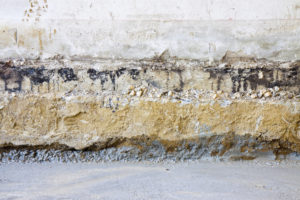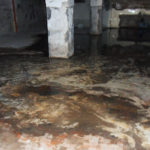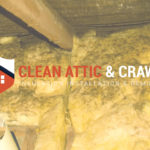How to Inspect for Radon in Your Crawl Space (DIY)
Have you heard of radon before? It’s an odorless, colorless, radioactive gas which occurs when radioactive components decay. Radioactive components are available in rock and soil across the world. Further, radon crawl space gas available in rock and soil can traverse through water and the air hence endangering our lives. Here is a simple guide to fixing radon.
Why is it Necessary to Investigate Your Crawl Space for Radon?
Nearly two radon atoms are discharged from each square centimeter of soil across the earth throughout the day.
What does this mean? It means that the radon that’s circulated in the environment will have little to no effects on you from your daily encounter with radon while outdoors. No matter how much you’ve separated your home from your crawl space, it’s important to have experts inspect the crawl space area regularly for moisture damage and mold.
You may also want to have professionals inspect both your crawl space and your home to rule out the presence of radon. Remember, radon can easily find its way in the living area hence becoming a serious health hazard. Since you can hardly recognize radon with your human eyes, the best way to find out the radon levels in your home is through testing.
Are you aware that radon will affect you more when you’re indoors?
Radon discharged from the soil in your crawl space, basement area, and even foundation will filtrate across your entire home. So serious is radon such that the EPA (Environmental Protection Agency) and Surgeon General recently released an alert saying that radon is among the leading causes of lung cancer in the US alone.
The two organizations further noted that more than 21,000 people die annually from radon infestation. Of course, this report is shocking which is why we should do everything to eradicate and prevent penetration of radon in our homes. If radon is trapped inside a building, then its concentration will increase.
An expert will tell you that if the radon in your home is 4% for each liter of air then you are living in a very unhealthy environment.
Do you know that you inhale approximately 20 liters of air through your lungs per minute? Studies suggest that an average adult will collect up to 10,000 radioactive atoms in the lungs, bronchi, and trachea per minute. Is this a shocking revelation? Yes, it is and you need to take appropriate measures before everything runs out of proportion.
Do You Need Gas Masks if Your Crawl Space is Infested with Radon?
Not really.
What you may not know is that safeguarding your home from radon exposure is not a difficult task as you may think. One of the ideal ways you can adapt to improve the air in your home is to appropriately vent your crawl space or basement.
Next, you can inspect your home to ensure that no gaps are available on the floor as this can be an ideal hiding place for radon. If you find any cracks or even holes, the best thing to do is to seal them.
Inspect the Floor and Walls
How often do you inspect your floor and walls? Are you one of the people who think that inspecting their floors and walls isn’t necessary? If the answer is yes, you may want to think again. If your floors or walls have gaps or even cracks, you can be assured that they’ll allow radon in your house.
What you can do to be on the safe side is to seal any openings.
You may consider insulating your crawl space as only then can you keep exposure from foundations and the soil at bay.
What about the floor?
You should ensure that your crawl space is adequately sealed using a vapor barrier. Yes, this is a tedious and messy job so you may need to call in an experienced expert to do it for you.
My Home has High Radon Levels. What Next?
Have you just found out that your home has high radon levels? Are you confused and wondering what steps to take next?
Of course, you’ll need to call in an expert to help counter the situation. Your expert may advise you to drill a hole across your crawl space or even basement area.
They’ll then place a long plastic pipe and ensure that it’s properly sealed in place. This pipe will be directed out of the home from where it’ll be attached to a suction fan.
The role of the suction fan is to take out radon and air from your home through the hole. This strategy helps develop a low-pressure area under the floor and this prevents radon and air from penetrating in the living area. Instead, it will circulate outdoors where it’s harmless.
Finally
There are many methods you can use to prevent radon from your home and these include: filling all gaps and cracks on your walls, foundation, and basement, and ensuring that your sump pump drains are well covered. You’ll be shocked to know that many people will die from radon as opposed to drunk driving according to studies. Don’t be a victim. Adopt the tips above and be on the safe side.



